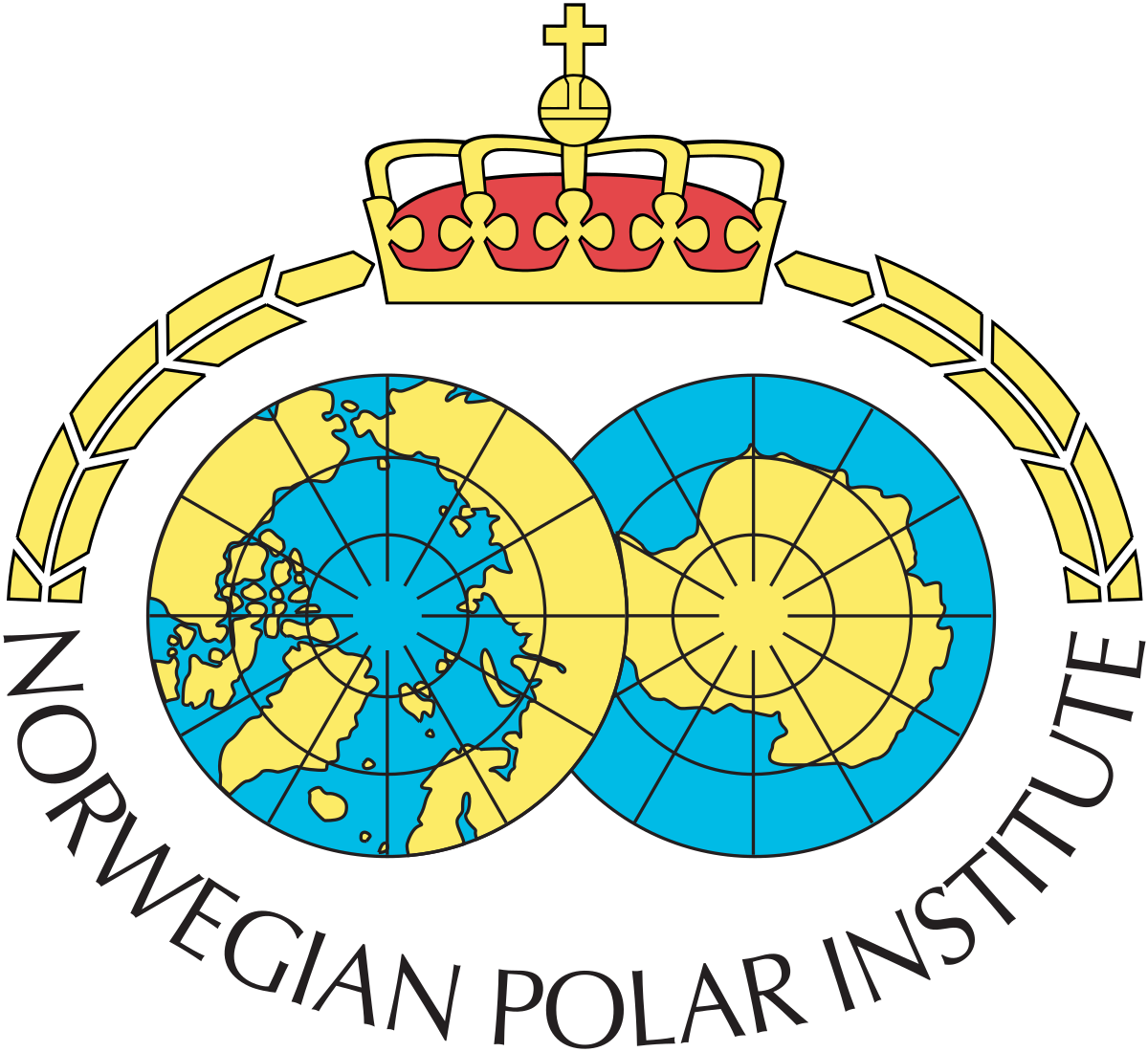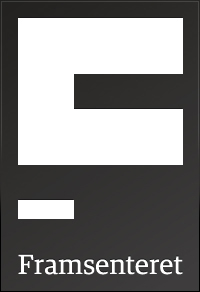
My name is Jill Pelto, I am a Masters student at the University of Maine in the Earth and Climate Sciences Department, and I work in the Antarctic. My research addresses the history of the ice sheet over the last 10,000 years, focusing on the retreat of ice in the southern Ross Embayment. This sort of paleoclimate work is done in large part to learn about the sensitivity of the Antarctic Ice Sheet in the past to various ocean and climate parameters, to better understand how it may respond to current change.
I am also a climate change artist, and I create paintings that address both positive and negative environmental topics, with the aim of using art as a platform for effective science communication.
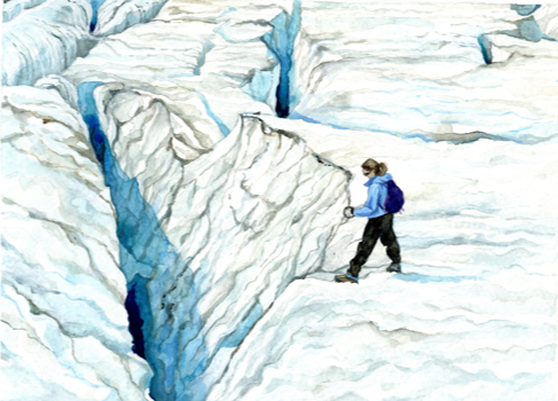 As an undergraduate student I worked on two separate majors at UMaine: Studio Art and Earth Science, and I developed a strong drive to link the often disparate fields. In my painting and printmaking courses I sought to compose images that shared what I was learning in my classes about the climate and glacier systems. I was inspired to share important environmental topics, as well as subjects that are simply fascinating to learn about. I was able to work in the field several times in my undergraduate career with Dr. Brenda Hall, and created field sketches and watercolors while doing work in these places, which included a field season in the Dry Valleys of Antarctica. Over my five years in these programs I continued to develop ideas for showcasing science in my art, with my overarching goal being a meaningful communication about our natural world.
As an undergraduate student I worked on two separate majors at UMaine: Studio Art and Earth Science, and I developed a strong drive to link the often disparate fields. In my painting and printmaking courses I sought to compose images that shared what I was learning in my classes about the climate and glacier systems. I was inspired to share important environmental topics, as well as subjects that are simply fascinating to learn about. I was able to work in the field several times in my undergraduate career with Dr. Brenda Hall, and created field sketches and watercolors while doing work in these places, which included a field season in the Dry Valleys of Antarctica. Over my five years in these programs I continued to develop ideas for showcasing science in my art, with my overarching goal being a meaningful communication about our natural world.
I wanted to gauge reactions to my artwork, and my initial audience was my classmates, professors, friends, and family. I was able to hear various interpretations of what my art communicated to them both emotionally and informationally. My objective was to engage people broadly by creating pieces that could express clearly and impactfully.
So far, the most successful and creative approach I have developed is incorporating graphical data into my artwork. I use x-y plots that tell simple stories of change over time, and link these with a visual message about the research question. Several topics I’ve chosen are: increasing temperatures over the last century and how this affects forest fire frequency; melting sea ice in the arctic and how this impacts species that rely on it; a shift in the United States to green energy use and how this inspires further conservation.
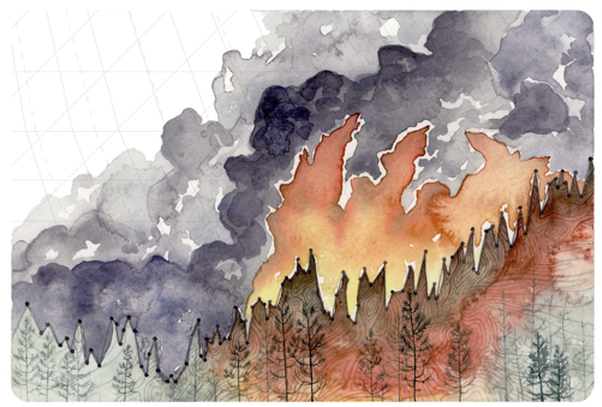
One of the first steps I plan to take as I finish graduate school and begin my career is to collaborate with scientists from a myriad of disciplines to communicate the research that they do with a broader audience. Art is a powerful form of expression, and is an excellent platform for inspiring thought. Whether I can transform reactions to my art into inspiring action is a question I hope to be able to answer in the years to come; but, without a doubt, I will try!
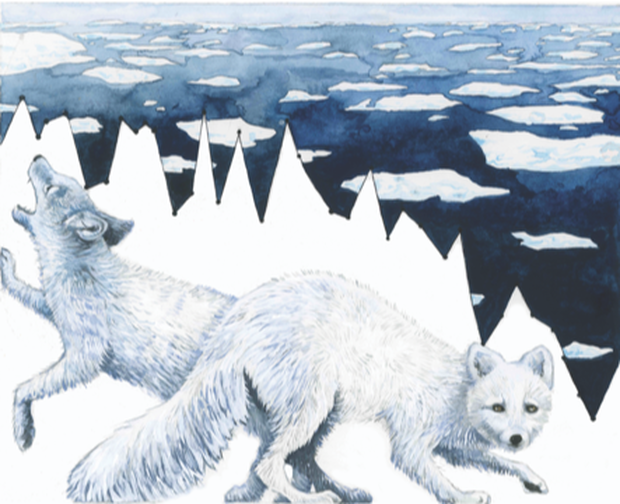
Another major goal of mine is to continue to use my data art to teach younger generations about our changing world. It’s absolutely crucial that we share and instill an understanding of the impact of humanity on the environment, in school systems world-wide. I helped to develop a lesson plan about my work with Science Friday’s Ryan Becker, and it has been absolutely wonderful to see the creations of students from around the world, and how the students have learned from this! (https://www.sciencefriday.com/educational-resources/illustrated-graphs-using-art-enliven-scientific-data/).

I still have a lot to learn about communication, and I am continuing to explore different ways to mix science and art. One of the biggest inspirations for me has been working in Antarctica, it was so impactful to actually visualize the role of the ice sheets for maintaining the sea level and climate we live in today. Once I finish my degree, I plan to make a series about the beauty and vulnerability of these locations.
As early career scientists, we are entering a field that needs more clear, and more diverse, communication with the public. I encourage you all to seek various methods of sharing your research, and note that collaboration with others (journalists, artists, writers, teachers, etc.) is a really successful way to achieve this. It’s important for us as scientists to start thinking outside of the box, and begin to explore unique, alternative methods through which to communicate science.

